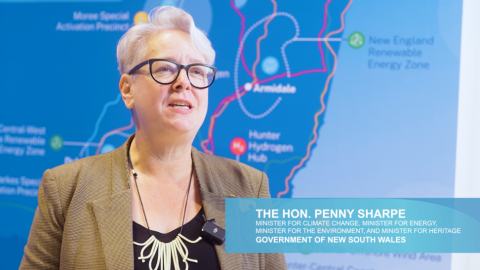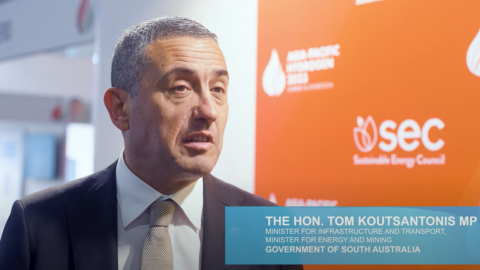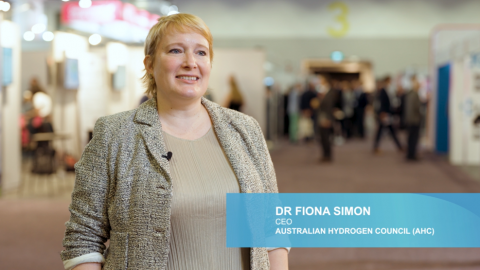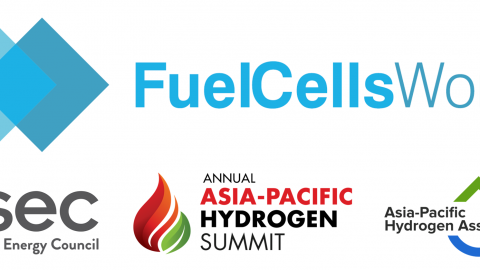In July, Neom Company, Air Products and ACWA Power announced an agreement to develop the World’s first green hydrogen-based megaproject –a US$5billion facility located at Neom, Saudi Arabia’s city of the future.
You can also download this article in its original PDF here.
In this article we highlight the fast-growing commercial opportunity that green hydrogen presents, and financing structures that can be used to facilitate investment in projects capable of exporting this new energy source. The article explores how existing hydrocarbon supply chains can be adapted for green hydrogen going forward, and why it is therefore an attractive industry for energy players to diversify into.
The project will comprise the world’s largest electrolysis facility by far—2GW—and will produce green hydrogen-based ammonia for export to global markets. Air Products will be the exclusive offtake of the green ammonia and intends to transport it around the world to be dissociated to produce green hydrogen for the transportation market. The transition from a hydrocarbon-based global energy market to zero-carbon alternatives is accelerating faster than many have expected. Green hydrogen is increasingly being recognized as a cornerstone of this evolution. The cost of production is falling while demand rises as energy importers worldwide position hydrogen as a key fuel of the 21st century industrial economy.
In a political declaration on 15 June 2020, seven European energy ministers committed to “enable a forward-looking European hydrogen infrastructure and liquid market in the near future,” while recognizing the importance of a timely scale-up to create a global renewable hydrogen market.
Days earlier, the German government had released a comprehensive National Hydrogen Strategy. Adopting the motto “shipping the sunshine” and based on the principle that only hydrogen produced on the basis of renewable energies (green hydrogen) is sustainable in the long term, the government’s energy policy assumes that a global and European hydrogen market will develop over the next 10 years and that most of the hydrogen [Germany will need] will have to be imported.
On the other side of the world, in March 2020 Japanese Prime Minister Shinzo Abe, cutting the ribbon for a green hydrogen research facility in Fukushima, said: “I have a firm resolution to make a great change…in the conventional energy frameworks all over the world. Clean hydrogen will become a source of energy for operating manufacturing floors in plants and fuel for various vehicles…. Let’s work together and cultivate a new era of hydrogen to accomplish these goals.”
Now, the world’s first green hydrogen export megaproject has been announced. What does this mean for development of the hydrogen market, and for project development going forward?
GREEN HYDROGEN
Green hydrogen is simply hydrogen, the most abundant element in the universe, produced by processes that are powered entirely by renewable electricity, such as solar and wind power.
The renewable electricity powers an electrolyzer, equipment that combines anode-cathode technology with a chemical catalyst, to split water molecules into hydrogen and oxygen.
The resulting hydrogen gas has the highest energy content of any common fuel by weight. It is manufactured without any emissions, pollutants or greenhouse gases, and emits none when used. The only by-product of the industrial process is oxygen, which is itself marketable or otherwise easily and safely disposed of by release into the atmosphere.
Green hydrogen’s zero-carbon characteristics distinguish it from other forms of reduced carbon hydrogen that form part of ongoing decarbonization efforts. Whereas historically hydrogen has been produced from coal or natural gas, which generates significant carbon emissions and is known respectively as brown and grey hydrogen, there has been increasing interest in blue hydrogen, for which the carbon emissions are captured and stored, or re-used. Green hydrogen removes carbon entirely from the equation.
Hydrogen can be stored in pressurized or liquefied form. Unlike batteries—the current preferred approach to storing renewable power—hydrogen in storage does not deteriorate over time. From storage, hydrogen can be converted back into energy for electricity generation. It can also be used as a feedstock for zero-carbon or reduced-carbon fuels—especially in hard-to-electrify industries such as aviation and freight logistics/shipping—chemicals and fertilizers.
There are many potential markets for green hydrogen, and diverse supply chain options for its delivery. Hydrogen gas can be liquefied and transported in vehicles and vessels, or combined with nitrogen to create green ammonia, a liquid, which opens up even simpler methods of transporting the zero-carbon energy such as bulk shipping. The ships themselves could be powered by ammonia or by hydrogen fuel cells.
Green hydrogen can be easily deployed in existing industrial processes such as refining, petrochemical and metal production. However, when hydrogen production is scaled up, the opportunities become much wider ranging.
According to the International Energy Agency (IEA), hydrogen and ammonia will start to be used together with, or instead of, natural gas and coal in power generation, while hydrogen’s storage capabilities also help mitigate grid-balancing challenges associated with increasing the share in the power mix of weather-dependent sources such as wind and solar power.
The aviation and shipping sectors, which have limited low-carbon fuel options available, represent an opportunity for hydrogen-based fuels to take significant market share. Norway, for example, has just announced Europe’s first commercial green hydrogen aviation project, which will create enough zero-carbon jet fuel to supply its five most popular domestic aviation routes.
The export opportunities are particularly exciting. As the “shipping the sunshine” motto encapsulates, green hydrogen ammonia is the first truly scalable medium, or energy carrier, for the export of one country’s renewable power resources to another country. For regions with abundant solar and wind resources (and land on which to locate them), such as the Middle East, there is an important new role to play in decarbonizing the global economy. The NEOM Company/Air Products/ACWA power project exemplifies the first project to capture this opportunity.
Green hydrogen imports will be attractive to countries that cannot produce renewable energy resources quickly enough, or at all, to meet their decarbonization objectives. In many places, demand for green hydrogen will outstrip the supply of renewable energy needed to produce it, at least for some decades.
For example, according to Hydrogen Europe, an industry association, EU hydrogen demand is forecast to be 16.9 million tons per year by 2030, nearly 75 percent of which will need to be imported from outside the bloc.
In Japan and South Korea, government policy dictates that all hydrogen imports must be carbon-free by 2030, and Japan’s Ministry of Energy, Trade & Industry (METI) expects Japan’s annual consumption of hydrogen to grow from 4,000 tons in 2020 to 300,000 tonnes by 2030 and 5 million–10 million tons by 2050. Japan is already looking at switching from coal and imported LNG to hydrogen for its gas-fired power plants.
IHS Markit has estimated, consistent with findings by the China hydrogen alliance, that hydrogen could constitute 10 percent of China’s energy mix by 2050, contributing to a 65 percent decrease in China’s carbon emissions from 2015 levels.
On the supply side, though, other than the NEOM Company/ACWA Power/Air Products project, there are few projects of sufficient scale currently in operation or under intensive development to meet this rising global demand.
The IEA estimates that less than 0.1 percent of global dedicated hydrogen production today comes from water electrolysis.
Current Electrolyser facilities are smaller than 100MW, 5 percent of the scale of NEOM’s.
There are plans in numerous European countries to create facilities that could be scaled sufficiently to generate exports, and in Western Australia’s Pilbara region there is a proposal for 15GW of solar and wind capacity to supply the local mining industry and provide electricity for hydrogen commodity production through electrolysis.
Future energy presents challenges despite the growing consensus that green hydrogen will be an important part of the future energy mix, and that demand for it will necessitate world-scale production and international trade, getting there will take creativity and dedication. We foresee three challenges that must be addressed:
- Formation of the market;
- Financing and;
- Establishment of the supply chain.
FORMATION OF THE MARKET
In order to make the significant capital investments necessary for a world-scale green hydrogen project, investors need confidence that there will be a stable market for its products once it starts operations. For early projects, there will be a chicken-and-egg element to this calculus, as investors balance first-mover advantages against the risk of oversupply.
However, as illustrated by examples throughout this article, we see policy globally as trending inexorably to the development of a market, similar to, and to some extent in place of, LNG, in which green hydrogen will be freely traded.
Moreover, to some extent, green hydrogen projects will have inherent risk mitigation built in, because of their dependence on renewable energy project co-development. New electricity capacity intended for powering electrolyzerscan be redirected to grids if the green hydrogen market is slower to develop than expected, or suffers demand volatility, assuming the grid has a need for the redirected power.
We also expect the early investors in green hydrogen projects, such as those in the NEOM Company/ACWA Power/Air Products project, to be major hydrogen/energy industry players, who are capable of judging market risks well, and are capable of deploying green hydrogen resources within a wider product portfolio.
FINANCING
We see well-structured green hydrogen megaprojects as strong candidates for limited recourse project financing, as well as other debt markets.
The zero-carbon nature of the products, and the high demand for them that is expected in countries heavily involved in the export credit financing market, means it is reasonable to expect significant liquidity being available for project financing.
Renewable generation sub-components of green hydrogen projects, like many utilities projects, can also be structured to attract funds investment or facilitate capital markets issuances.
Financing will involve innovative work, though. While electrolysis per se is a well-known industrial process, in the absence of a track record of world-scale projects having successfully operated, there will of course be questions about technology selection and reliability.
We see this as similar to the early years of project financing in other major industries, such as power, LNG and petrochemicals, where lenders gather comfort over time, leading to the emergence of well-understood models for banking projects in various regions of the world.
As with other sectors that integrate different technologies, such as LNG-to-power, for some projects there may also be difficulties in securing a competitive single point construction solution for all the various components, both power and hydrogen/ammonia production, which could give rise to split construction packages, and resulting interface risk that requires structuring to mitigate.
SUPPLY CHAIN ESTABLISHMENT
Establishing a route to market for green hydrogen will require capital investment to build new, or retrofit existing hydrocarbon focused, land and sea freight carriers, liquefaction/regasification facilities, as well as pipelines.
As we understand it, this is not necessarily technically difficult, but presents a further risk for early players in the new market.
Due to the extensive additional investment that would be required for the development of new pipeline networks, we expect that the early green hydrogen projects will rely heavily on sea transportation—not dissimilar to the LNG market—enabling producers to reach a broader range of customers, most likely large-scale industrial consumers to start with, and reducing upfront investment costs in the supply chain.
We expect that a number of the practical and contractual issues faced in the LNG market, particularly during its early development, to be relevant to the early hydrogen market—e.g.,the need for long-term offtake arrangements with price certainty and a strong offtake.
Pilot and small-scale projects have already begun. For example, in Victoria, Australia, a US$350million plant will ship 5,000 tons of liquefied hydrogen per year to japan, along with 18,000 tons per year of ammonia. It is expected that the pilot phase will demonstrate the integrated supply chain by 2021, with a subsequent investment decision to be made about commercialization.
A HEAD START
A question often asked about the development of the green hydrogen export industry is: who will be the first to market?
The NEOM Company/Air Products/ACWA Power project illustrates part of the answer to this question. Renewable power developers and existing hydrogen market players will form joint ventures in parts of the world where renewable electricity resources are abundant and the regulatory and economic environment is facilitative.
We expect traditional energy players also to get involved quickly, to carve out a place in the burgeoning green hydrogen market. National and international oil companies, on both the supply and demand sides of the market, would be natural investors and developers, both because of their deep knowledge of crude hydrocarbon and LNG markets—which may be templates for parts of the green hydrogen supply chain—and because of their existing infrastructure and supply chains.
These historical advantages will reduce the barriers to market for them compared with niche players. Many National Oil Companies (NOCs) and International Oil Companies (IOCs) already have well-advanced hydrogen strategies in place, and those that do not would be well advised to develop a plan for their role in this industry going forward.
CONCLUSION
Green hydrogen is a serious contender to be one of the replacements for hydrocarbons as the world moves towards sustainable industry, and has the benefit of leveraging existing hydrocarbon infrastructure as it grows.
With governments increasingly promoting green hydrogen and ammonia, we see the industry as replacing petrochemicals and LNG in the megaproject cycle of the 2020s. Early investors from both the supply and demand side of the market can gain an upper hand in the early stages of this exciting new industry.
FOR MORE INFORMATION PLEASE CONTACT:
| Dan Feldman Partner Abu Dhabi T +971 2 410 8158 dan.feldman@ shearman.com |
Omar Alkaffas Associate Abu Dhabi T +971 2 410 8163 omar.alkaffas@ shearman.com |
Disclaimer: This article first appeared in Project Finance International under the original title ‘Shipping the Sunshine’.










